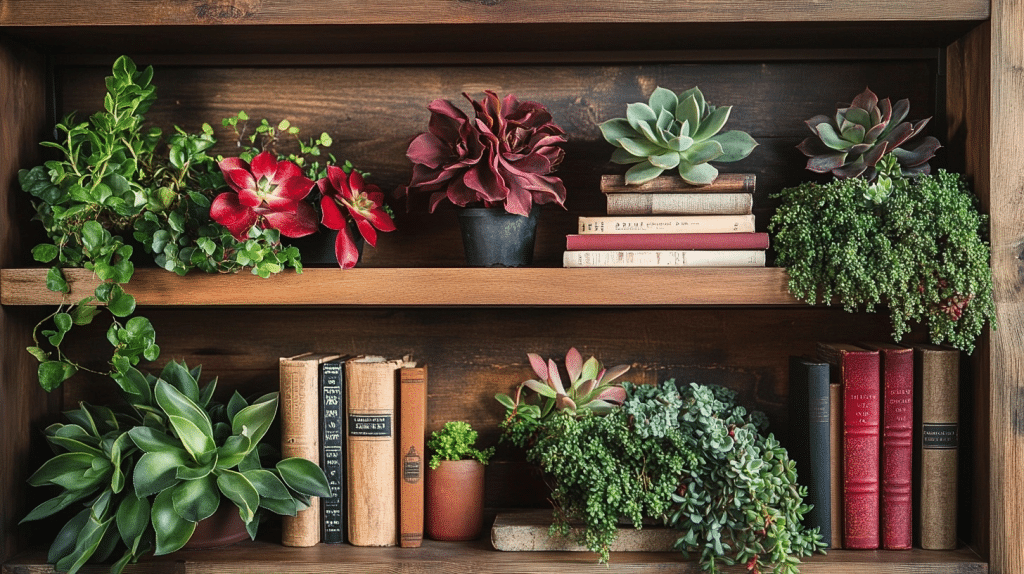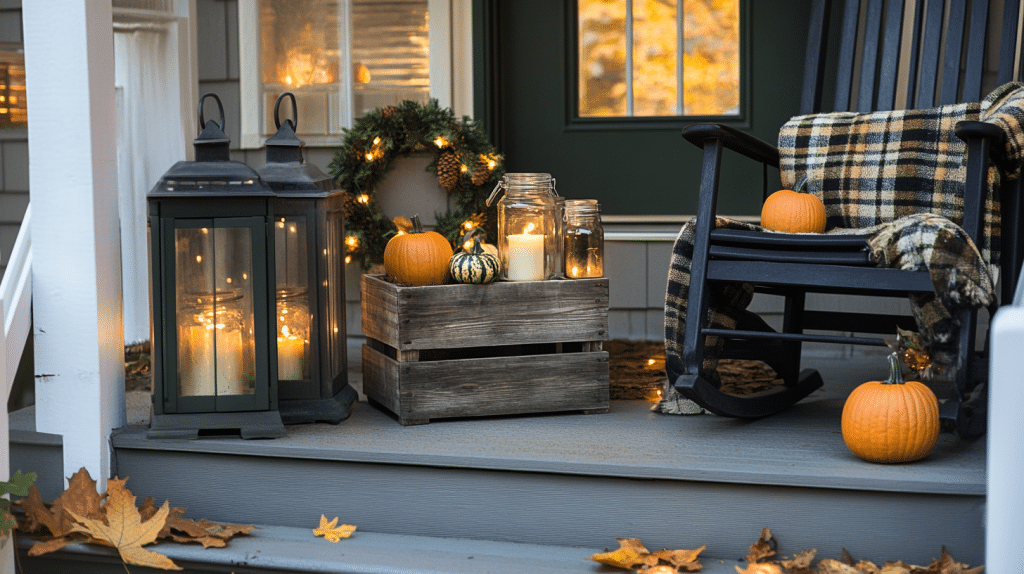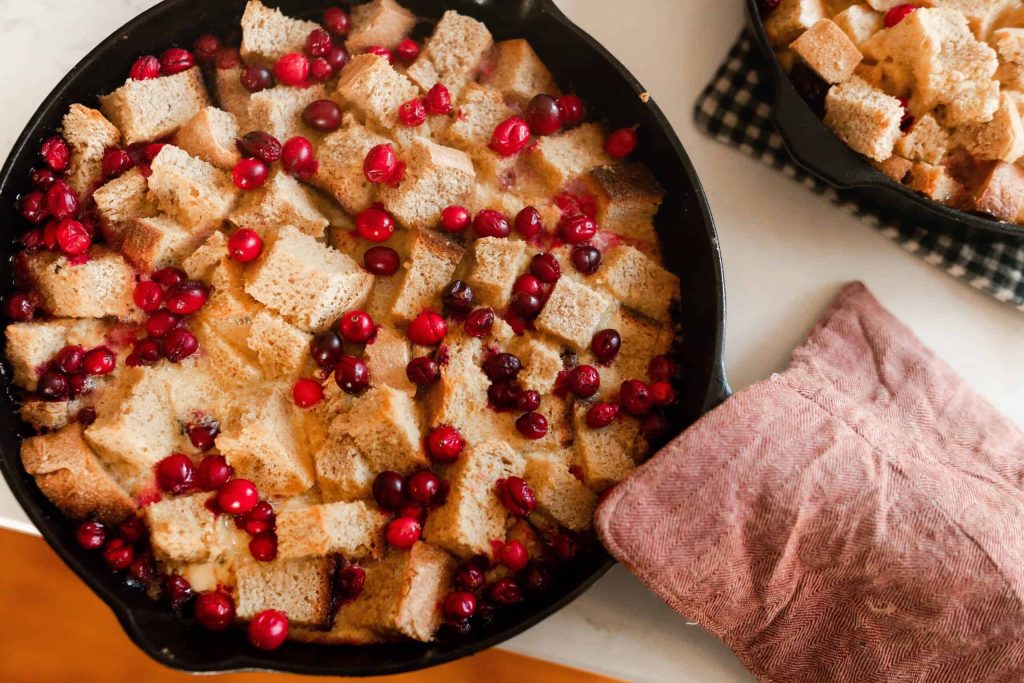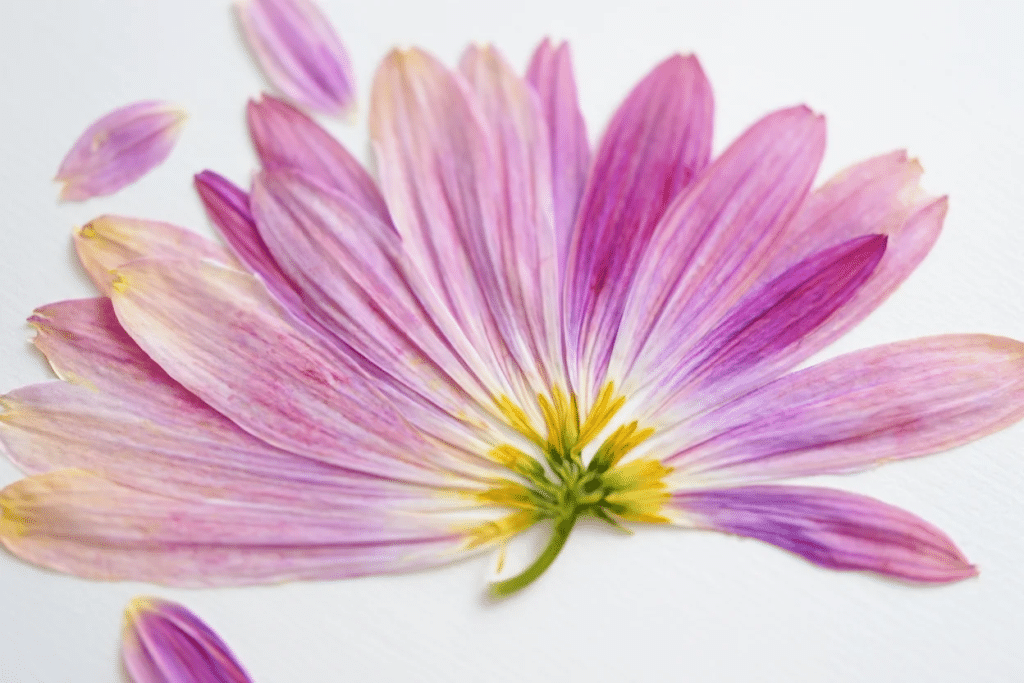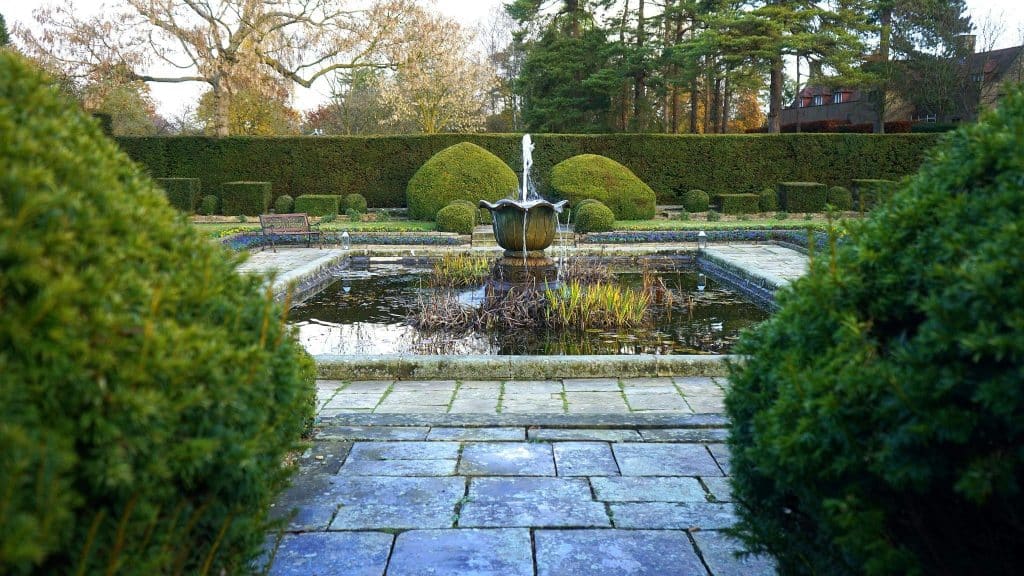Want to add something different to your plant collection?
Succulent vine might be just what you need. These tough little plants stand out from regular succulents with their trailing stems and unique looks.
Many plant lovers don’t know that this type of vine exists. These plants combine succulents’ water-storing abilities with a climbing or hanging growth habit that makes them perfect for shelves, hanging baskets, or wall gardens.
Let’s look at some top picks that will make your plant shelf stand out.
What is a Succulent Vine?
Succulent vines are plants that store water in their leaves, stems, or roots while growing in a trailing or climbing pattern.
They combine succulents’ drought-tough qualities with a growth habit that flows over pot edges or climbs up supports.
These plants offer a great option for folks who want low-maintenance greenery with visual appeal. Most need bright light but not direct sun.
Key facts about succulent vines:
- They need less watering than regular houseplants
- Many plants can grow both indoors and outdoors in warm spots
- Their stems can stretch several feet when happy
- Most grow slowly, making them good for small spaces
Unlike typical succulents that grow in tight shapes, these vines spread out, making them perfect for hanging planters.
Top Varieties of Succulent Vines
A Succulent vine offers a unique way to showcase plants in your home. They combine succulents’ drought-tough nature with a trailing growth style that makes them perfect for hanging pots and high shelves.
I’ve found these plants to be some of the lowest-maintenance options in my collection. Their special water-storing parts help them thrive even when I forget to water them.
1. String of Pearls
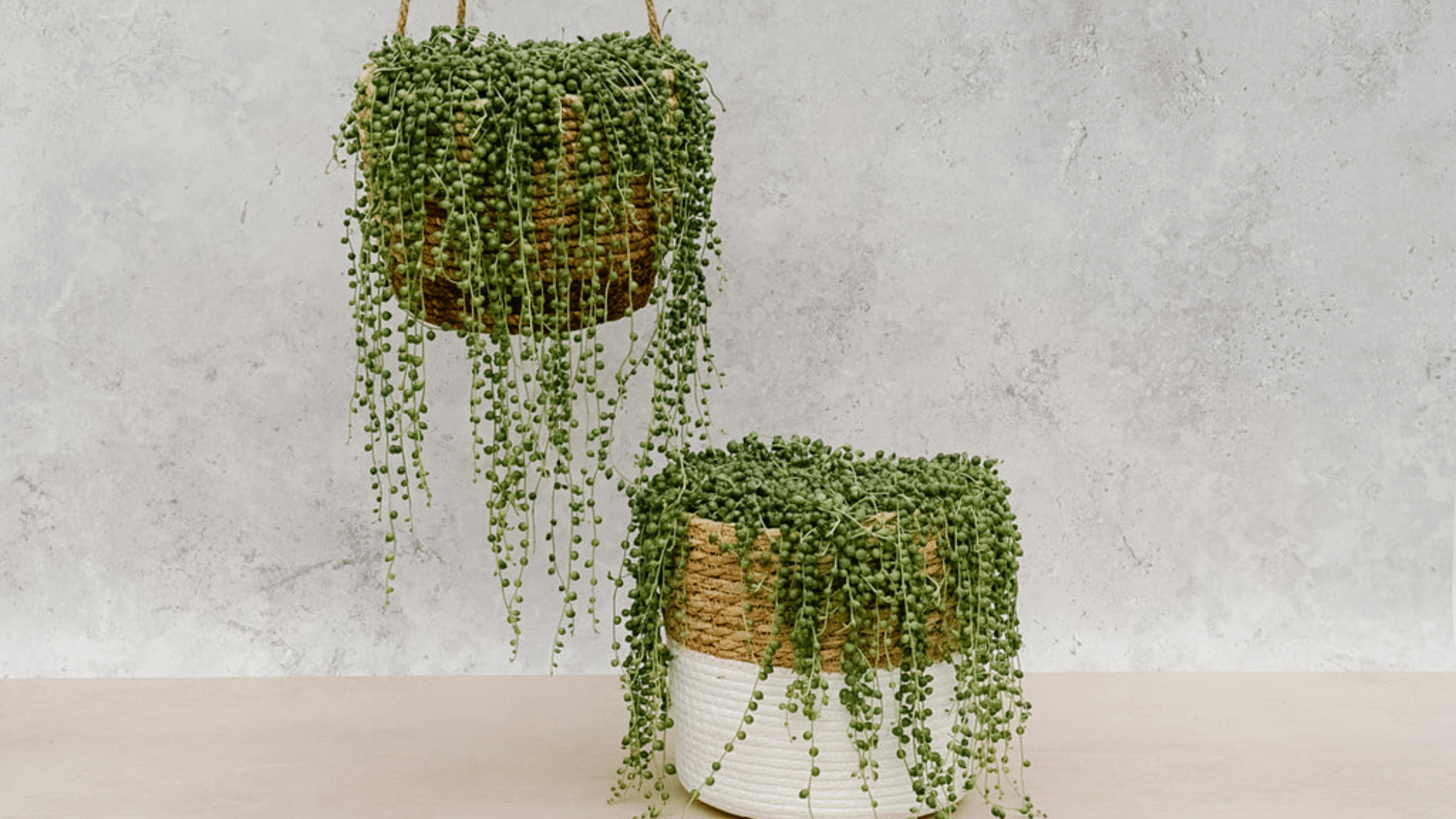
String of Pearls features round, pea-sized leaves along thin stems. These green “pearls” store water, helping the plant thrive in dry conditions.
- Native to South Africa
- Stems can grow up to 3 feet long
- Needs bright, indirect light
- Water only when the soil feels dry
- Produces small white flowers with a cinnamon scent
This plant looks best in hanging baskets where its bead-like strands can hang freely. The stems break easily, so place them where they won’t be bumped or moved too often.
2. String of Hearts
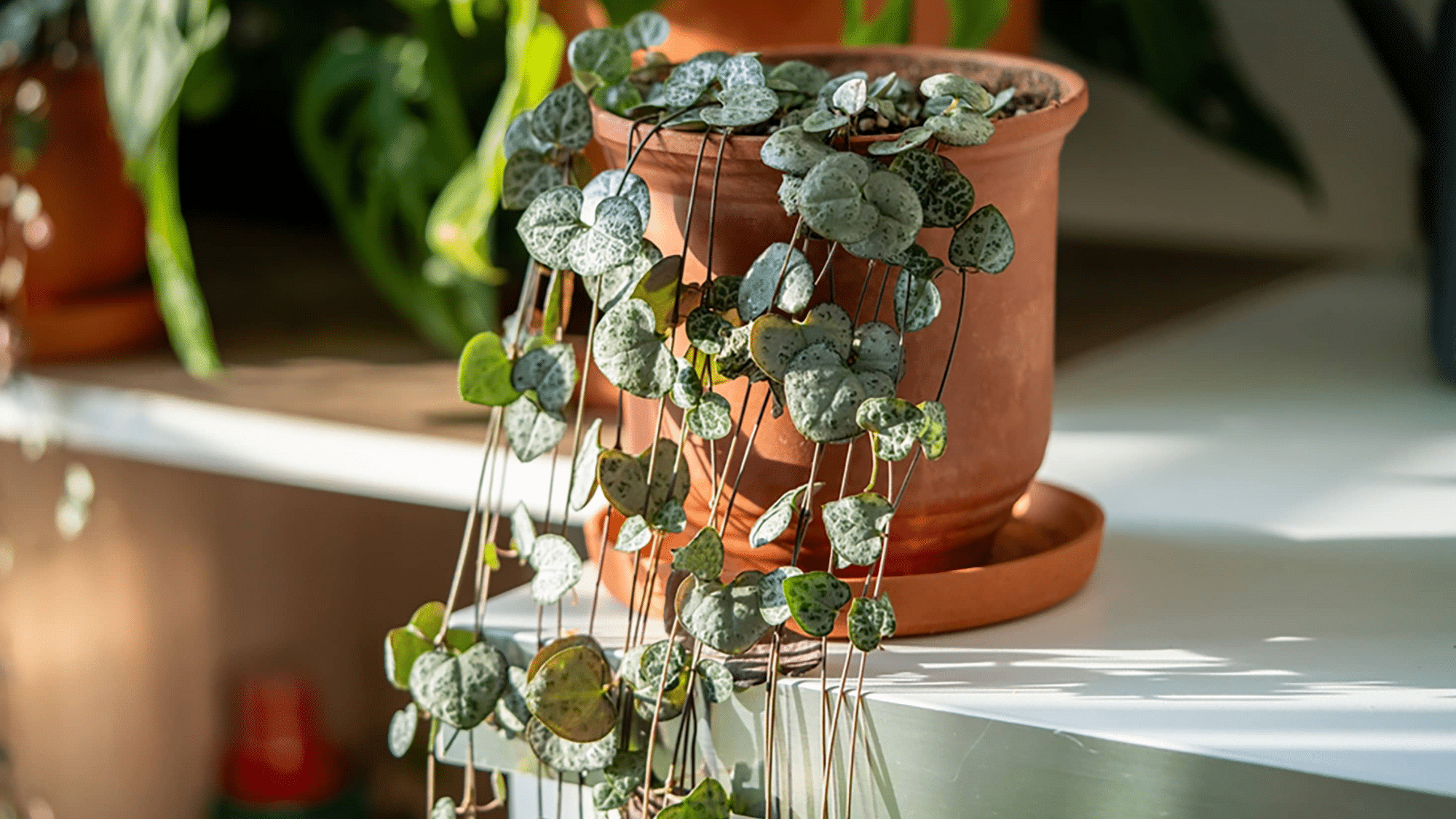
This succulent vine displays small, heart-shaped leaves with silver patterns on thin, purple stems. This dainty vine creates a delicate curtain of foliage.
- Also called “Chain of Hearts”
- Can grow several feet long
- Prefers bright, filtered light
- Water the soil when it is completely dry
- Produces unique purple tubular flowers
The gap between leaves creates an airy, light look. This plant grows faster than many other succulent vines. It works well in hanging planters or can be trained to climb small supports.
3. Burro’s Tail
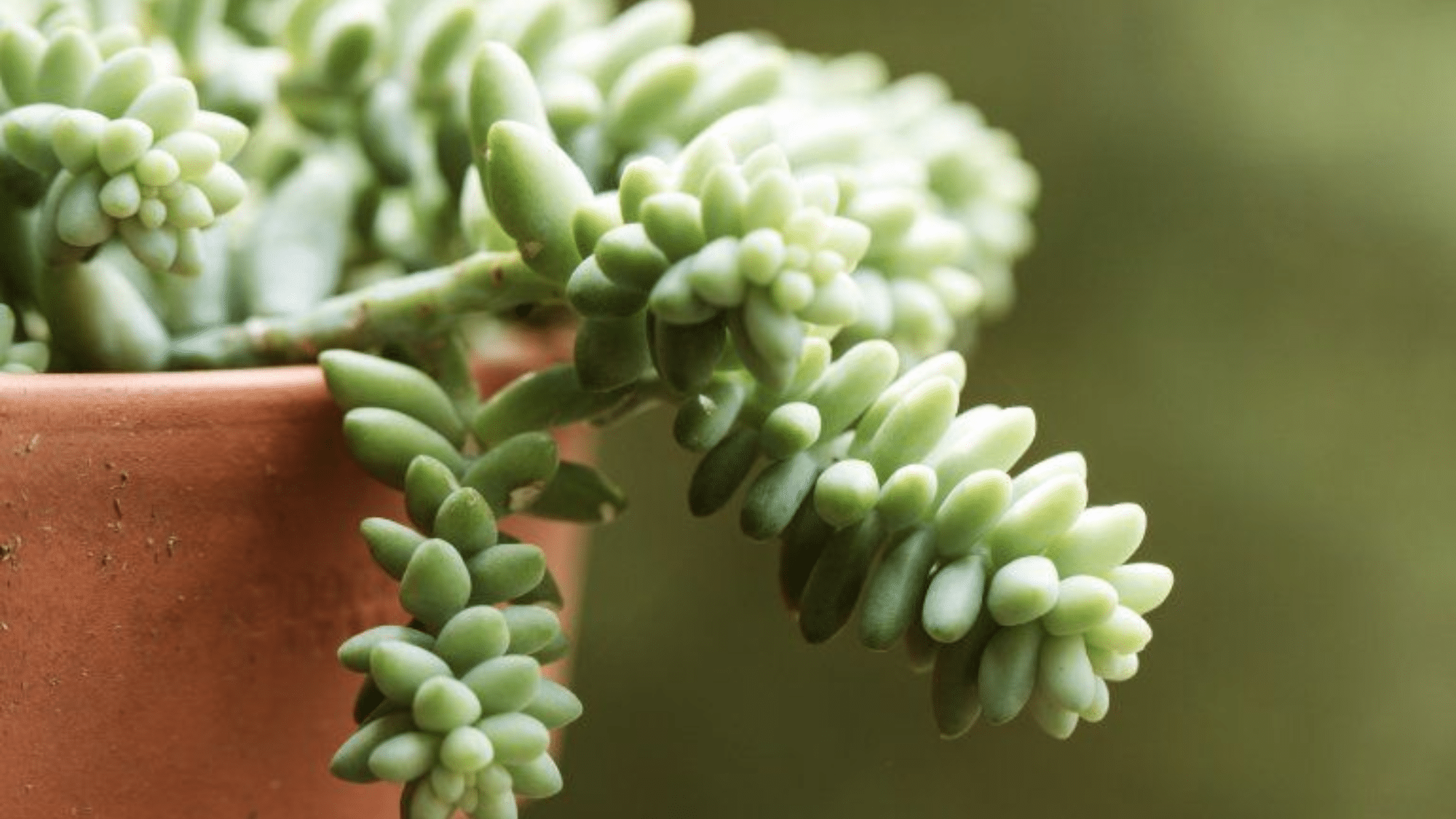
Burro’s Tail forms long stems covered with plump, blue-green leaves that overlap like scales. The overall effect looks like a donkey’s tail.
- Native to Mexico
- Stems can reach 4 feet in length
- Thrives in bright, indirect light
- Water the soil when it has dried out
- Leaves fall off very easily when touched
This plant is best left undisturbed in a hanging basket. The fallen leaves can be used to start new plants if placed on the soil.
4. String of Bananas
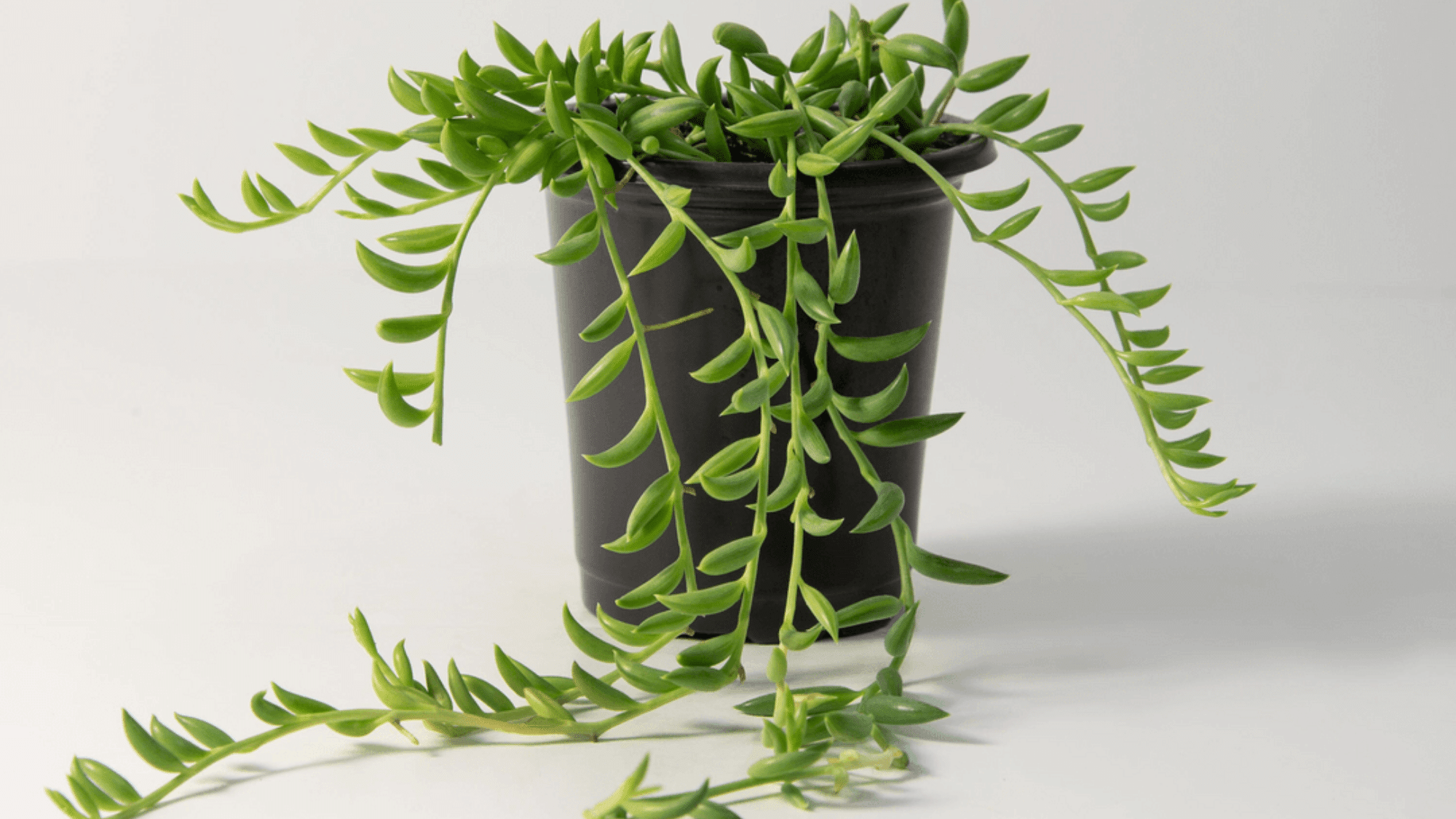
The string of Bananas grows curved, banana-shaped leaves along thin stems. The leaves point outward from the stem, creating a spiky yet soft appearance.
- Related to String of Pearls
- Grows faster than many similar plants
- Likes bright, indirect light
- Water when the top inch of soil is dry
- Produces small white flowers with a cinnamon scent
This plant is less fragile than String of Pearls, making it better for beginners. It fills out quickly and creates a full, lush hanging display with minimal care.
5. String of Dolphins
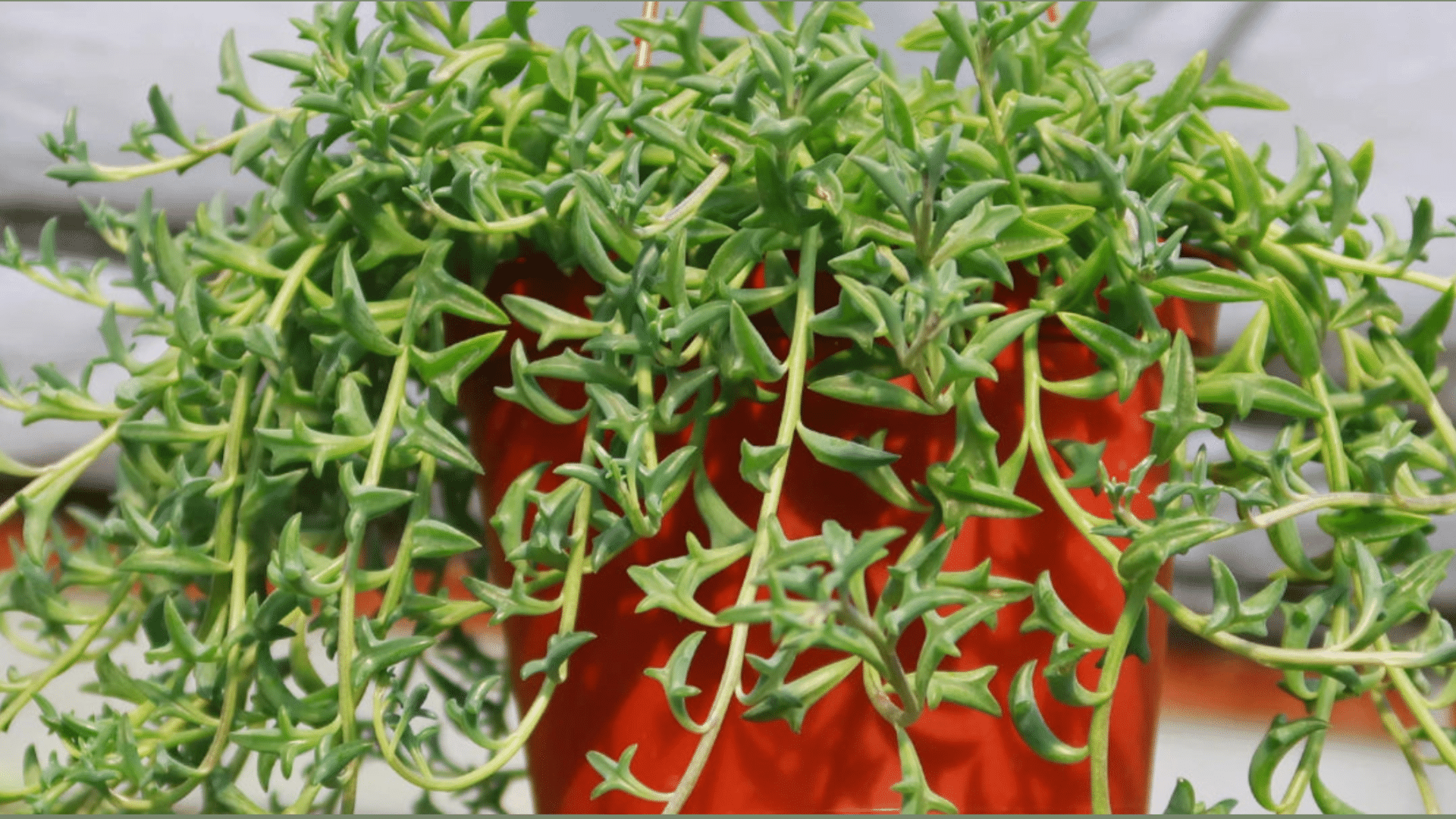
This succulent vine shows off leaves shaped like jumping dolphins. This unique plant creates conversation whenever guests notice the leaf shape.
- A hybrid of String of Pearls relatives
- Grows moderately fast with proper care
- Needs bright light but not direct sun
- Allow the soil to dry between waterings
- Can bloom with small white flowers
The playful leaf shape makes this plant a favorite among collectors. It works well in hanging pots or as a trailing plant on a high shelf.
6. Ruby Necklace
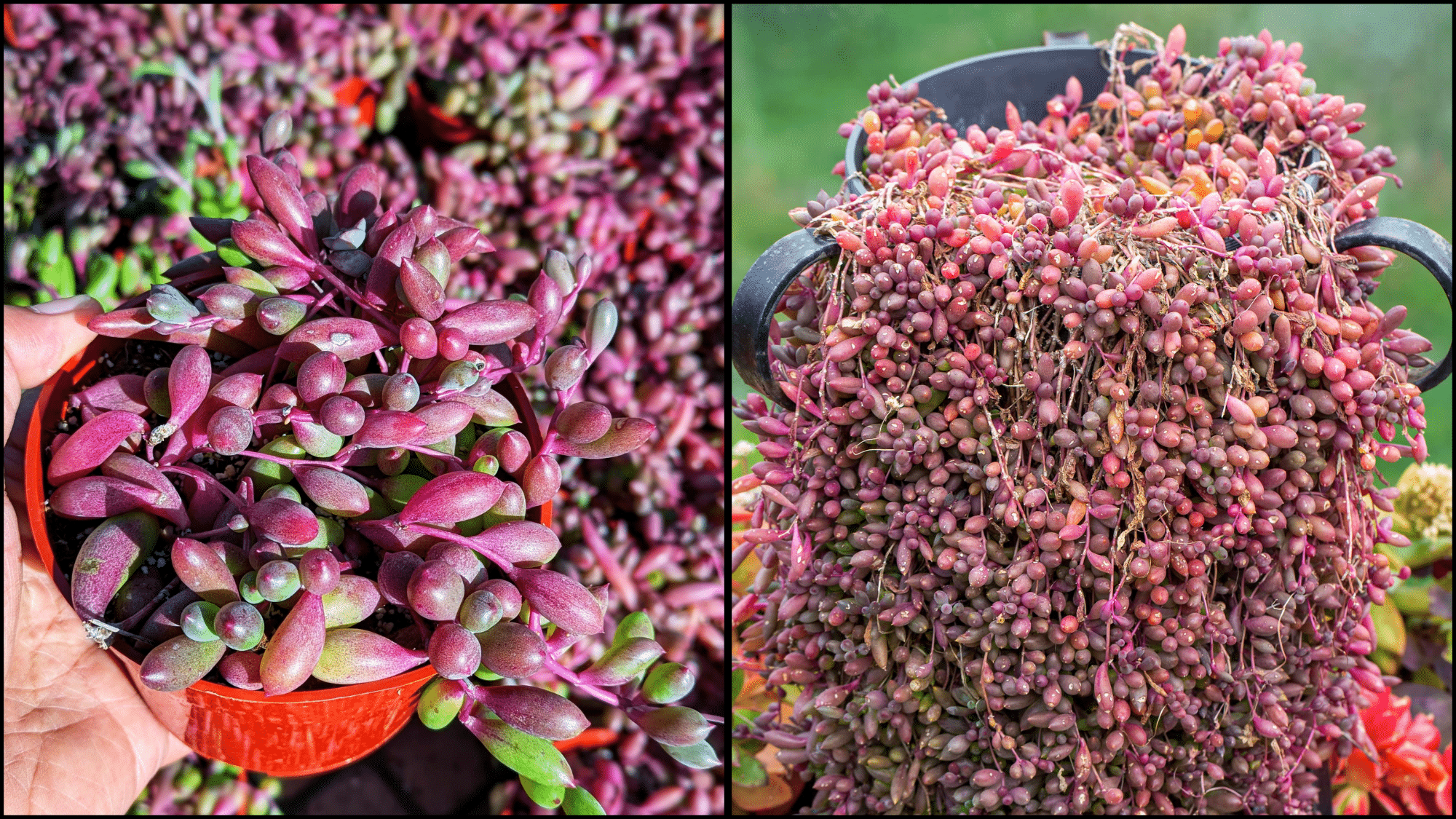
Ruby Necklace features purple-red stems with small, oval leaves that turn bright red with sun exposure. This color-changing plant adds drama to any collection.
- Also called “Purple Flush”
- Stems can grow 2-3 feet long
- Needs several hours of direct sun for best color
- Drought-tolerant but likes regular water in the growing season
- Yellow star-shaped flowers appear in summer
The more sun this plant gets, the more vivid its colors become. When mixed with green succulent vines, it creates a striking contrast.
7. Trailing Jade
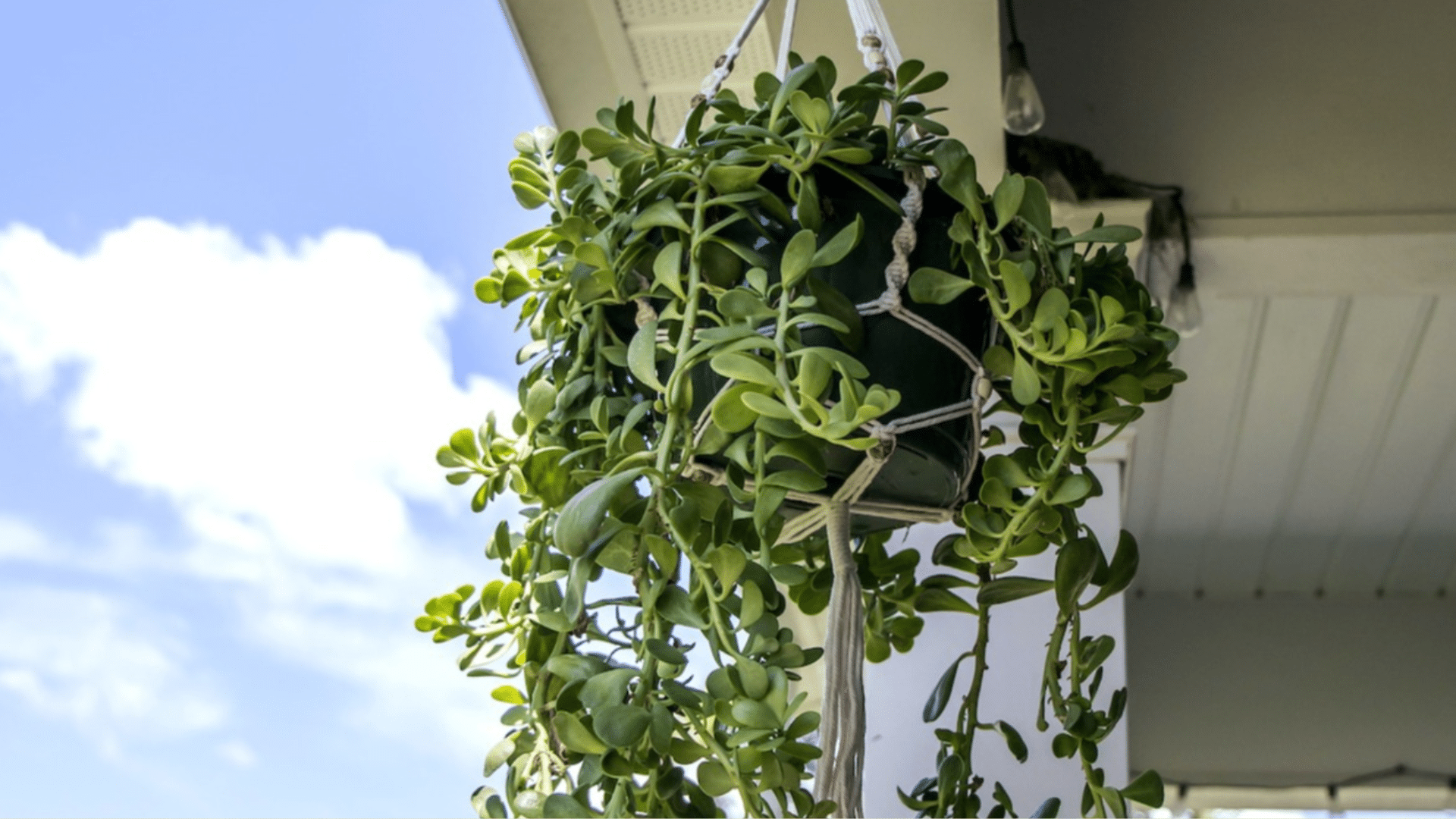
Trailing Jade grows small, round leaves on stems that cascade over pot edges. Unlike standard jade plants, this variety naturally grows in a trailing form.
- Smaller leaves than the common Jade Plant
- Creates dense mats of foliage
- Likes bright, indirect light
- Water the soil when it feels dry
- Produces small white star-shaped flowers
This plant works well in hanging baskets or wall planters. Its relatively small leaves give it a more refined look than some other trailing succulents.
8. Hindu Rope Plant
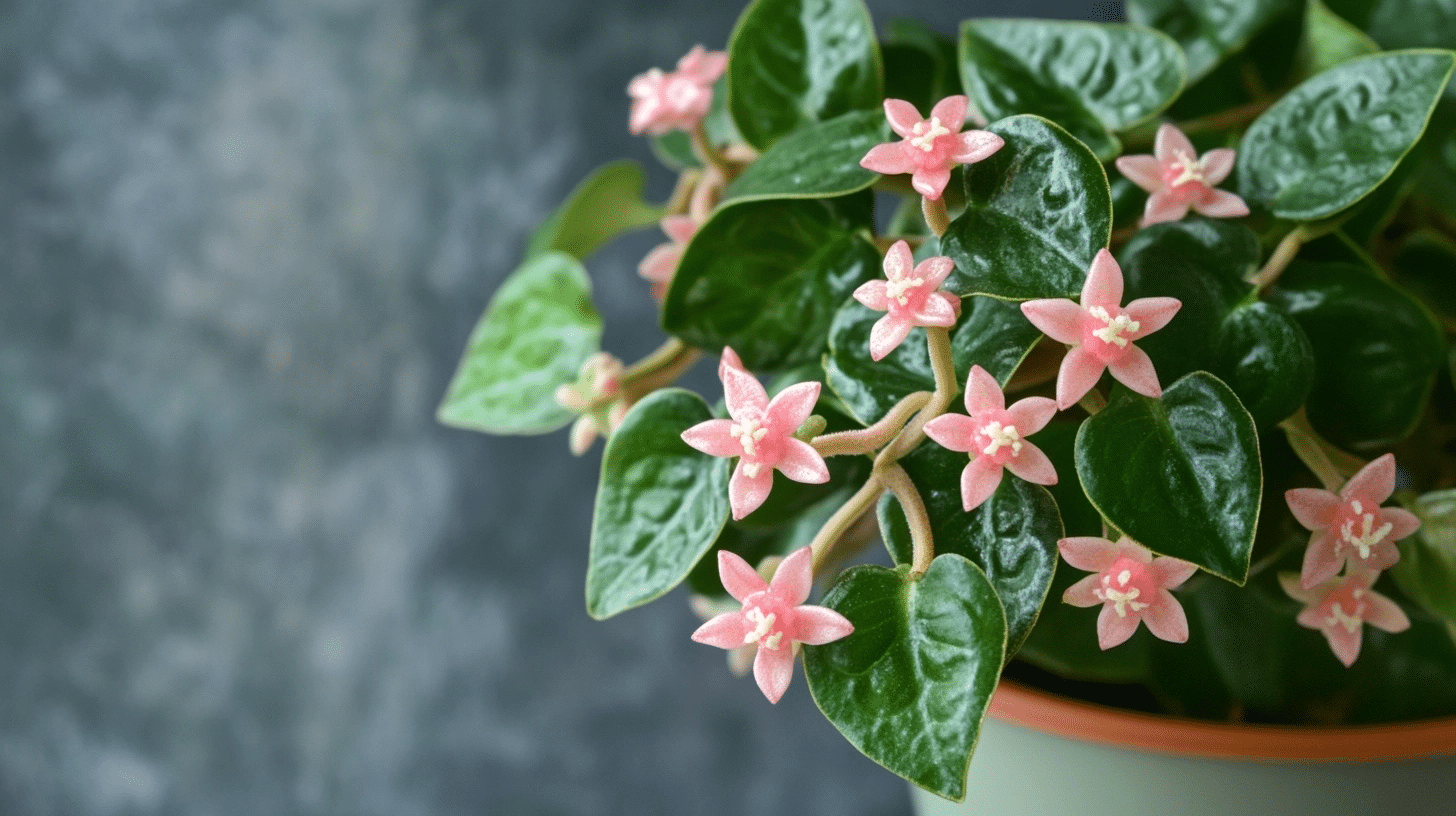
Hindu Rope Plant grows twisted, curly leaves along woody stems. The waxy, curled leaves give this plant a unique, rope-like look.
- A type of Hoya plant
- Slow-growing but long-lived
- Prefers bright, indirect light
- Allow to dry out between waterings
- Produces clusters of star-shaped, scented flowers
This plant makes an eye-catching hanging specimen. Its unusual growth habit creates visual interest even when not blooming.
9. Fishhook Senecio
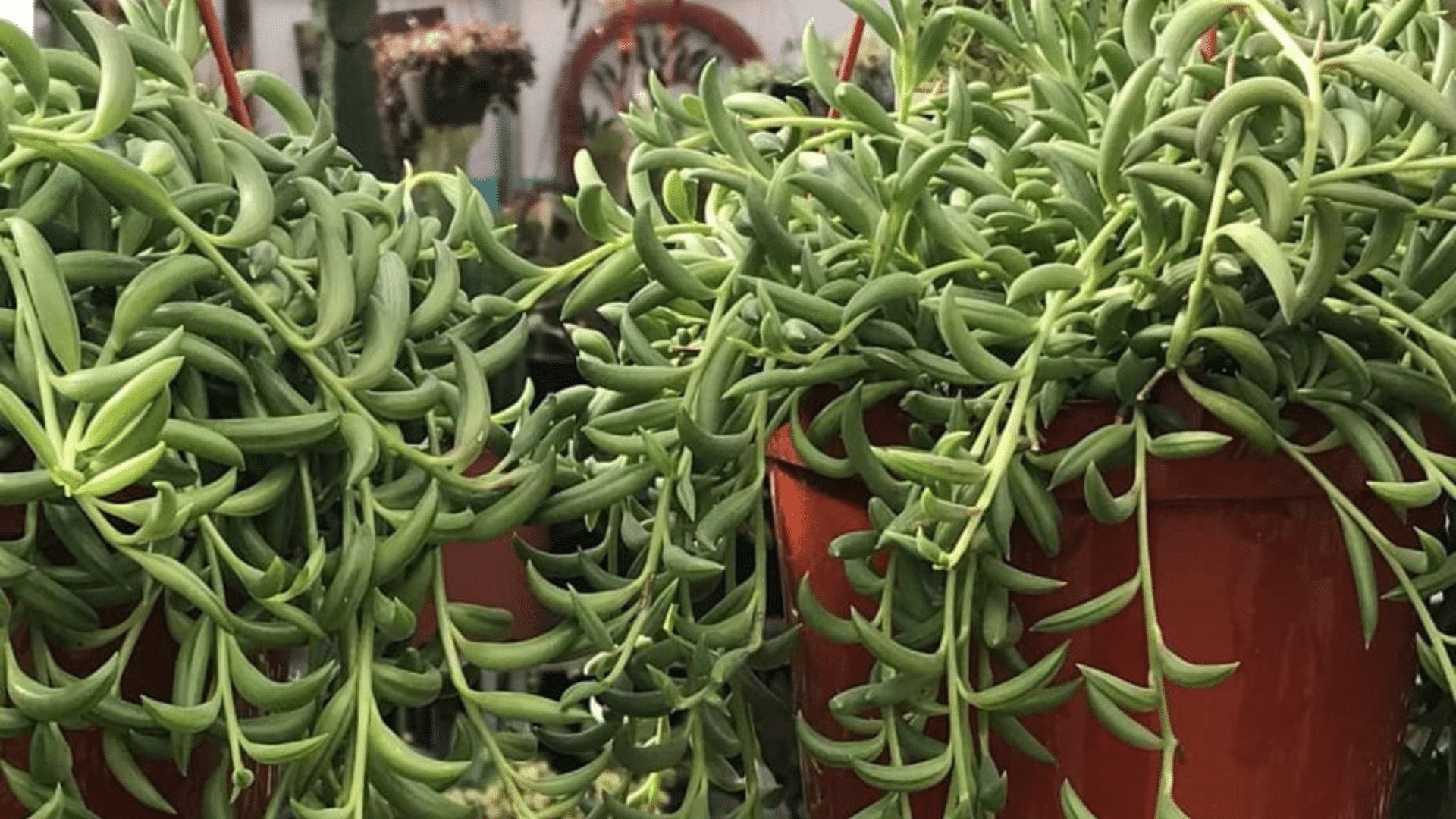
This succulent vine features thin, curved leaves that look like tiny fishing hooks. These blue-green hooks grow along trailing stems.
- Native to dry regions of South Africa
- Can grow stems up to 3 feet long
- Prefers bright light with some direct sun
- Very drought-tolerant
- Yellow daisy-like flowers appear in summer
The hook-shaped leaves help this plant stand out from other trailing succulents. It works well mixed with plants that have different leaf shapes.
10. Pickle Plant
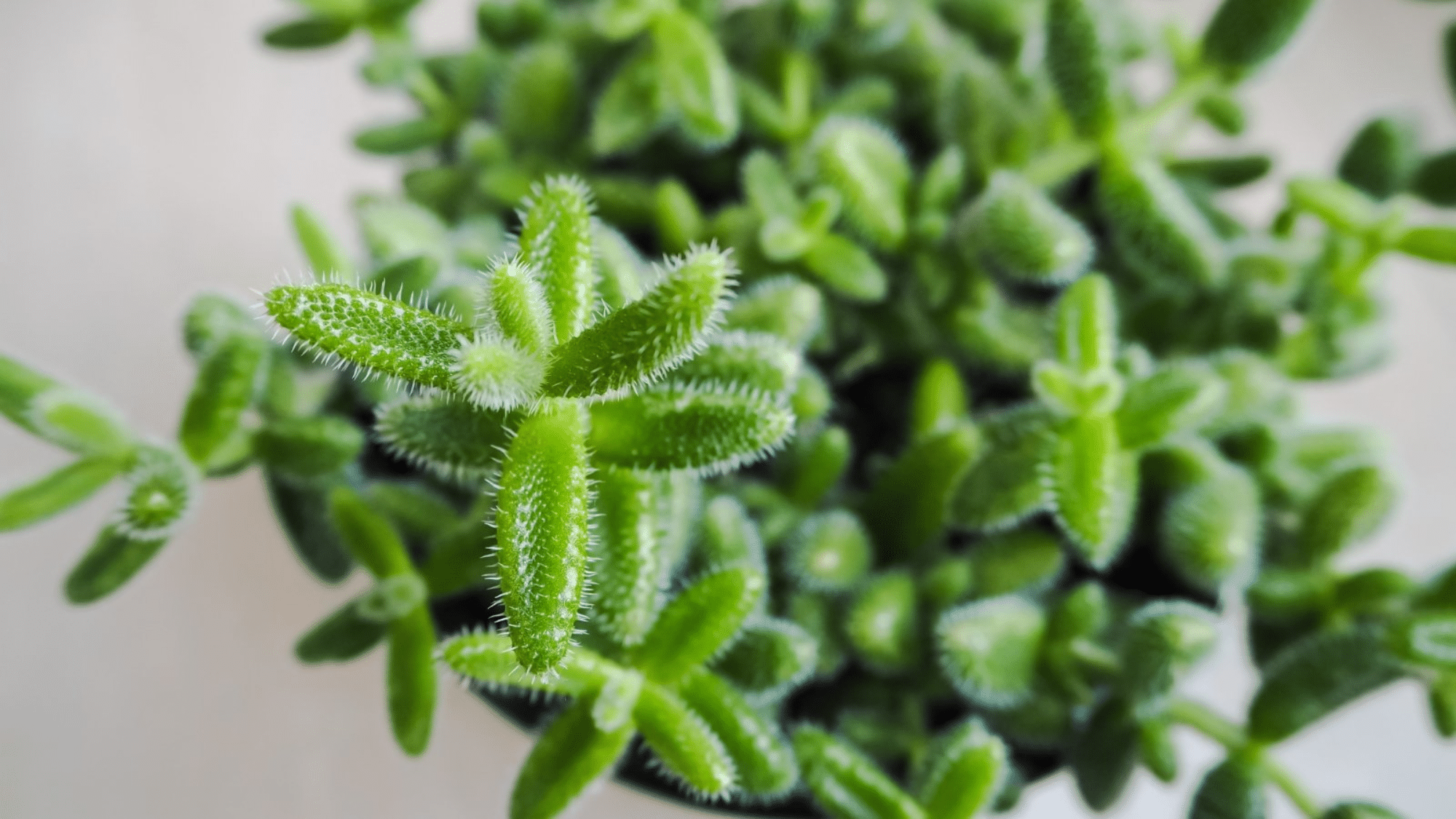
Pickle Plant grows stems covered with small, pickle-shaped leaves with tiny hairs. These fuzzy leaves help the plant retain moisture.
- Also called “Kleinia stapeliiformis“
- Stems can grow up to 2 feet long
- Likes bright light with some direct sun
- Very drought-resistant
- Produces small yellow flowers
The unusual texture of this plant adds variety to succulent collections. The stems will trail over pot edges or can be trained to grow upward with support.
How to Care for a Succulent Vine
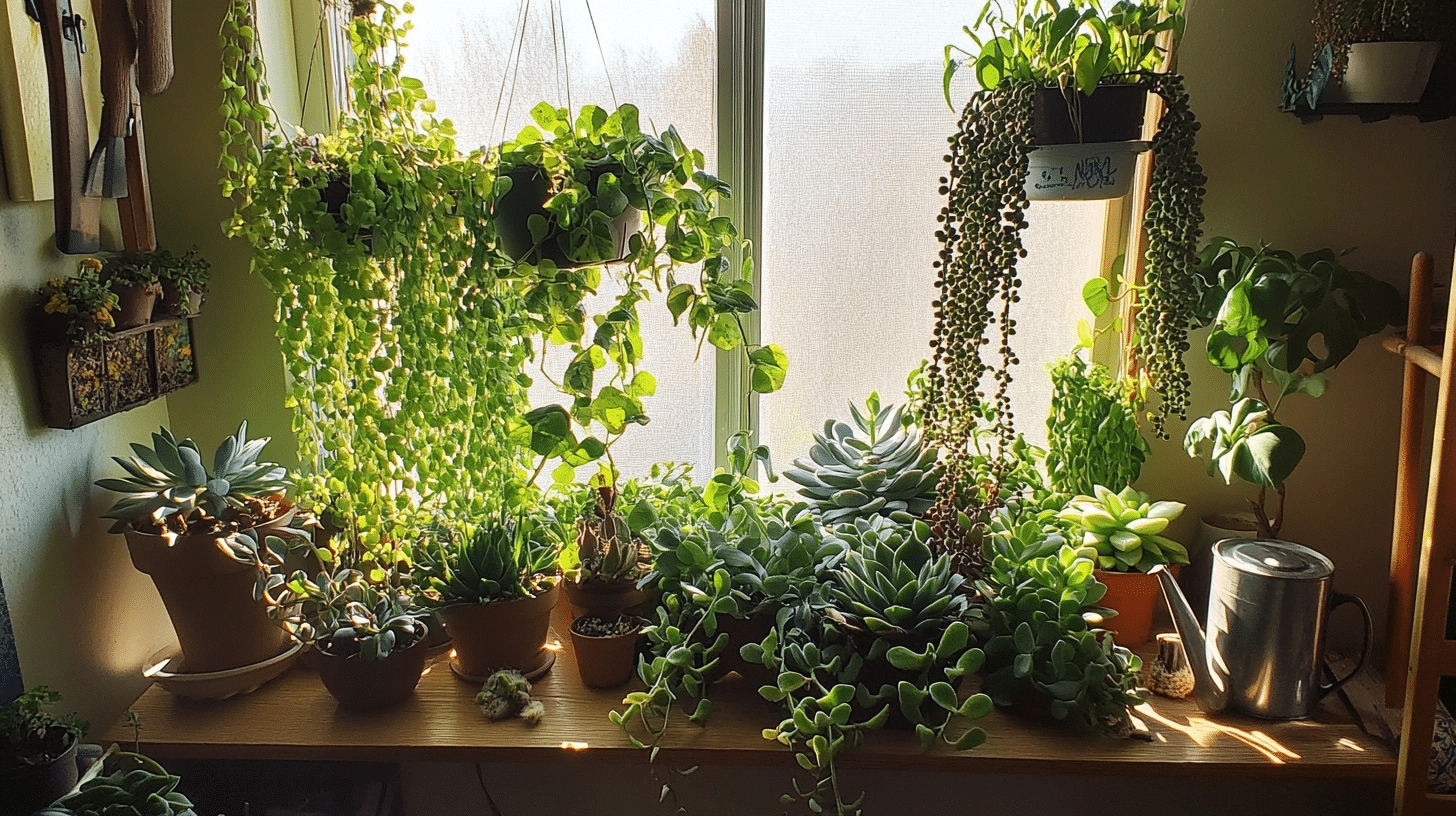
Taking care of succulent vines is easier than you might think. These plants combine the tough nature of succulents with a lovely trailing habit.
Even if you’ve had trouble with plants before, these forgiving growers might be just right for you.
Here’s what you need to know to keep them happy.
1. Light Requirements
Succulent vines need good light to stay healthy. Most types do best with 4-6 hours of bright light each day.
- Direct sunlight works well in the morning hours (east-facing windows)
- Afternoon sun can be too harsh and may burn leaves
- A few feet back from the south or west windows often works perfectly
- Rotating your plant helps all sides get even light
- Yellow or pale leaves often mean your plant needs more light
- Reddish tint on leaves usually means they’re getting good sun
If your home lacks natural light, grow lights can help keep your plants happy during darker months.
2. Watering Routines
The biggest mistake with succulent vines is watering too often. These plants store water in their leaves and stems.
- Always check if the soil is dry before watering (stick your finger 1-2 inches down)
- Most succulent vines need water every 2-3 weeks in summer
- In winter, cut back to once a month or less
- Water deeply until it runs from the drainage holes
- Empty saucers so plants don’t sit in water
- Wrinkled leaves often mean your plant needs a drink
- Soft, mushy leaves suggest you’re watering too much
Remember that it’s better to underwater than to overwater these plants. They can recover from drought much faster than from rot.
3. Soil and Potting
The right soil mix helps prevent many common problems with succulent vines.
- Use special cactus/succulent soil or make your own
- Mix regular potting soil with perlite, pumice, or coarse sand (50/50)
- Containers must have drainage holes
- Hanging baskets show off trailing stems best
- Wall planters work well for shorter varieties
- Small trellises can train some types to climb
- Repot every 2-3 years or when growth slows
- Spring is the best time for repotting
Terra cotta pots work especially well because they allow soil to dry out more quickly between waterings.
Common Problems and Solutions
| Issue | Cause | Signs | Solution |
|---|---|---|---|
| Root rot | Overwatering | Blackened stems, mushy leaves | Let the soil dry completely, remove the affected parts, and repot in fresh soil. |
| Stretching/legginess | Low light | Long gaps between leaves, pale color | Move to a brighter spot, prune stretched stems |
| Pests | Mealybugs, spider mites, scale | White fuzzy spots, webbing, and tiny bumps | Wipe with alcohol on a cotton swab, spray insecticidal soap |
| Leaf drop | Stress from moving or temperature change | Many leaves are falling at once | Keep stable conditions, avoid sudden moves |
Decor Ideas with Succulent Vines
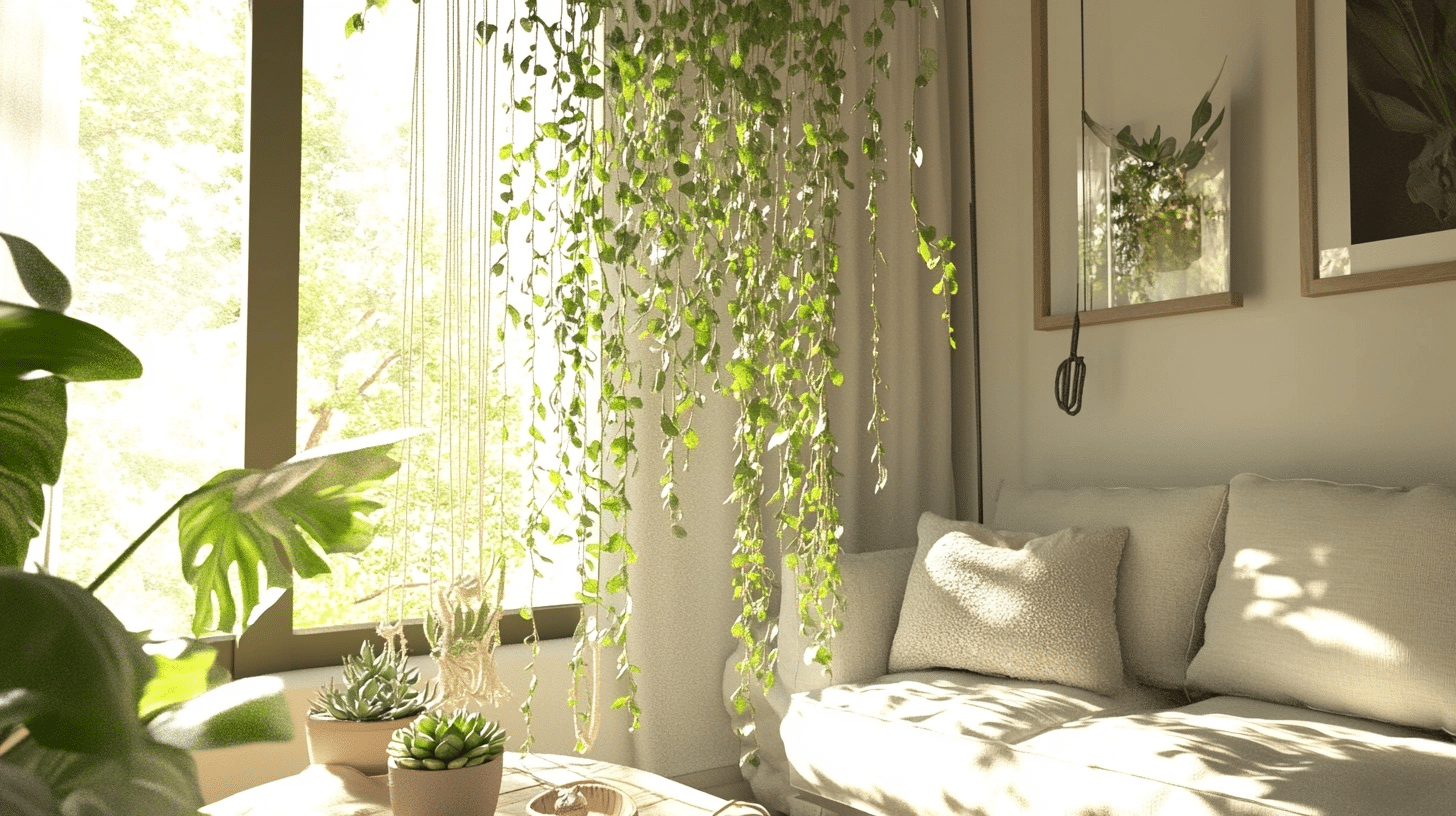
A Succulent vine can add a touch of green to your home in ways other plants can’t. Here are some simple ways to use these plants in your decor:
Hanging Displays:
Place String of Pearls or Burro’s Tail in macrame hangers or simple pots suspended from the ceiling. The long trailing stems create a living curtain effect that draws the eye down. This works well in corners or near windows.
Wall Gardens:
Mount several small pots on a wall to create a living art piece. Mix different types like String of Hearts and String of Bananas for varied textures. The contrast between the heart-shaped leaves and curved banana shapes adds visual interest.
Shelf Toppers:
Set trailing succulents on high bookshelves or cabinet tops. As they grow, they’ll cascade down the sides. This works perfectly with a Trailing Jade or Ruby Necklace, whose red stems add a pop of color.
Bathroom Accent:
Many succulent vines like bathrooms’ extra humidity. A String of Dolphins on a high shelf can thrive in this space while adding a fun touch with its dolphin-shaped leaves.
Desktop Gardens:
Create mini gardens in small pots for your desk or table. Fishhook Senecio stays compact enough for smaller spaces while still providing that trailing effect.
Kitchen Window:
Hang a small Hindu Rope Plant near your kitchen window. The twisted leaves catch light in interesting ways and don’t take up counter space.
Wrapping Up
Now that you know about these beautiful hanging plants, it’s time to add some succulent vines to your home. These water-storing wonders offer the perfect mix of good looks and easy care.
Start with just one type that catches your eye, then expand your collection as you gain confidence.
They work in small spaces where other plants wouldn’t fit. They bring life to high shelves, empty walls, and bare corners.
Which succulent vine will you try first?
Leave a comment below sharing which one you plan to grow!


